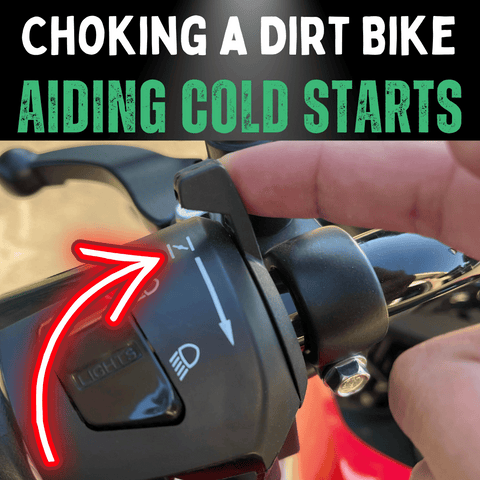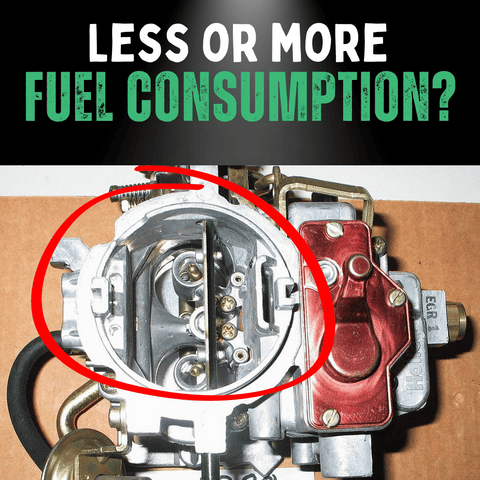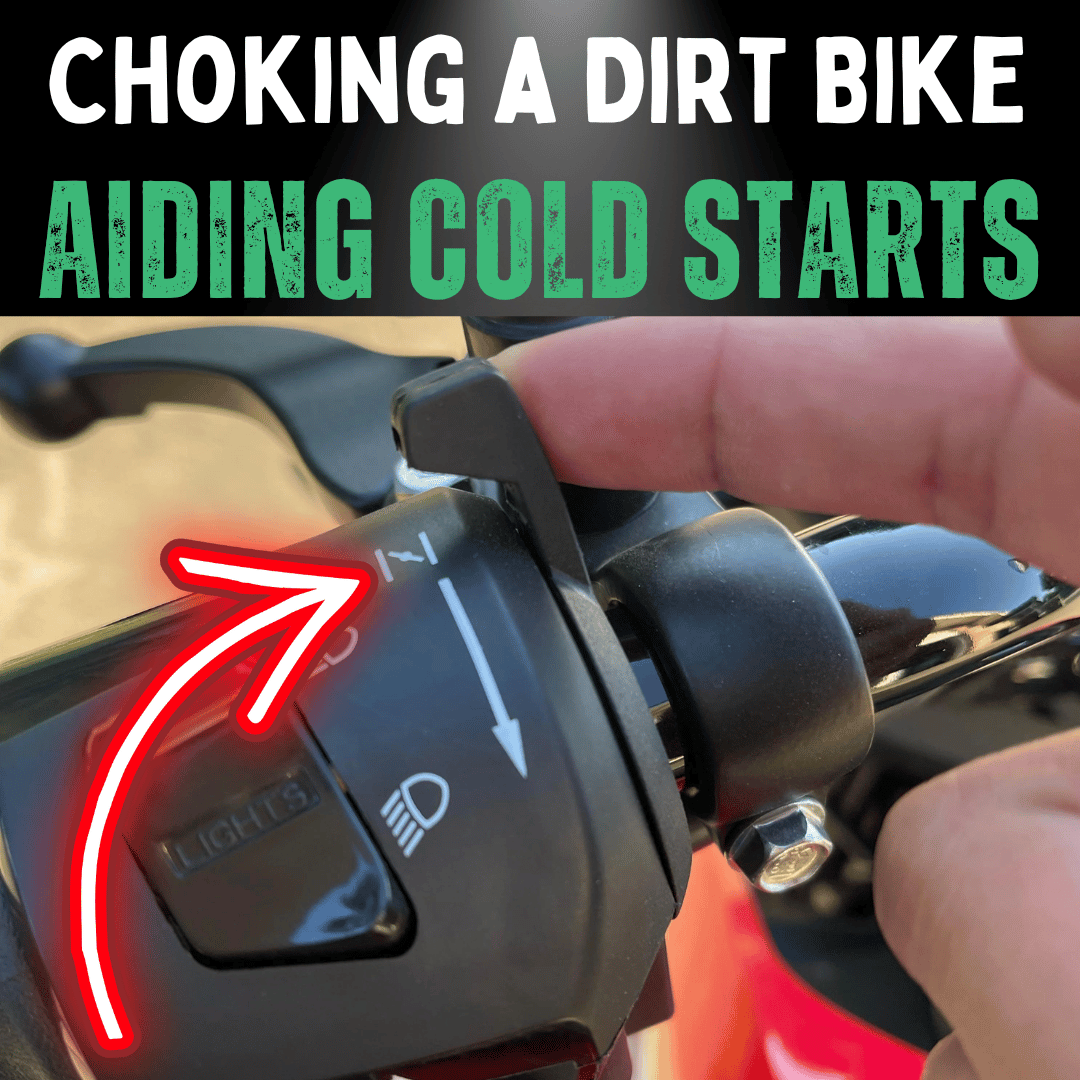Updated: 20.05.25
Struggling to start your dirt bike on a cold morning?
The choke might be your solution. 
Many riders, especially beginners, are puzzled by the choke lever or knob. What does it do, and how should you use it? Let’s dive into the essentials of dirt bike chokes.
1. What Is a Choke?
A choke is a device that restricts air intake to enrich the air-fuel mixture in the carburettor, aiding cold engine starts. It’s typically a lever or knob near the handlebars or engine.
2. How Choking a Dirt Bike Works
Choking a dirt bike limits airflow to the carburettor, enriching the fuel-air mixture for easier cold starts. Disengage the choke once the engine warms up for optimal performance.
Learn more about carburettor tuning in our guide.
3. Types of Chokes
Chokes vary by vehicle, including motorcycles and ATVs. Here’s a breakdown:
| Choke Type | Description | Typical Application |
|---|---|---|
| Plunger Style | Pull out to engage, push in to disengage. | ATVs, some dirt bikes |
| Lever Style | Move lever to engage or disengage choke valve. | ATVs, motorcycles |
| Handle Style | Turn handle to control choke. | Various vehicles |
| Switch Style | Toggle switch to engage or disengage. | Modern motorcycles |
4. The Science Behind Choking
A cold engine struggles to vaporise fuel, like sugar dissolving slowly in cold water. The choke enriches the air-fuel mixture for easier ignition. See how it impacts fuel consumption.

5. How a Choke Functions
Engaging the choke reduces airflow, increasing fuel in the mixture. This richer mix ignites more easily, ensuring smooth starts. Follow our step-by-step choke guide.

6. Why Use a Choke?
A choke ensures reliable cold starts, saving time and frustration, especially in remote areas. It’s essential for smooth engine performance in low temperatures.
7. Environmental Factors
Cold weather and high altitudes (thinner air) often require choke use, while warm, humid conditions may not. Adjust based on conditions for optimal performance.
8. When to Use a Choke
Use the choke for cold engine starts. Disengage it once the engine runs smoothly without sputtering to avoid flooding. Check out motorcycle hacks for more tips.

9. Common Choke Mistakes
Avoid these errors:
| Mistake | Misconception | Correct Practice |
|---|---|---|
| Leaving choke on | Improves performance | Disengage when engine is warm |
| Using choke as throttle | Increases speed | Use throttle for speed control |
| Skipping choke in cold | Not necessary | Use for cold starts |
| Overusing choke | Always helpful | Use only for cold starts |
Proper choke use won’t harm your engine. Maintain it with regular checks, as outlined in our spark plug guide.

10. Troubleshooting Choke Issues
- Choke Won’t Stay Up: Check for loose or broken choke cable; adjust or replace.
- Engine Only Runs on Choke: Clean or replace clogged pilot jet; check for vacuum leaks.
- Unclear Choke Position: Verify lever or plunger position.
- Choke Not Enriching Mixture: Clean or replace clogged enrichment valve; inspect EFI circuit.
- Choke On When Not Needed: Turn off to prevent stalling.
Explore more fixes in our troubleshooting guide.
11. Safety and Maintenance
Follow manufacturer guidelines for safe choke use. Regularly inspect and lubricate the choke cable, ensuring it’s free of dirt. A well-maintained choke enhances reliability.
Frequently Asked Questions
When should I use the choke on my dirt bike?
Use the choke for cold engine starts, disengaging it once the engine runs smoothly to avoid flooding.
Can overusing the choke damage my dirt bike’s engine?
Proper choke use won’t harm the engine, but overuse increases fuel consumption and may cause flooding.
How do I know when to turn off the choke?
Turn off the choke when the engine runs smoothly without sputtering, typically after a minute of warming up.
Is a choke necessary in warm weather?
In warm, humid conditions, you may not need the choke, but use it if the engine struggles to start.
Can I retrofit my dirt bike with a modern choke?
Retrofitting is possible but complex; consult a mechanic to avoid engine issues or warranty voids.
Get in Touch
Enjoyed our guide on dirt bike chokes? Visit RiiRoo.com or join our Live Chat for more tips on kids’ ride-on motorbikes!
Ready to Ride? 🚀
Explore our range of kids’ electric motorbikes for young adventurers!





Share:
What is a Dirt Bike? 10 Mind-Blowing Facts You Didn't Know
How Much Does a Dirt Bike Weigh? 5 SHOCKING Facts You Didn't Know!